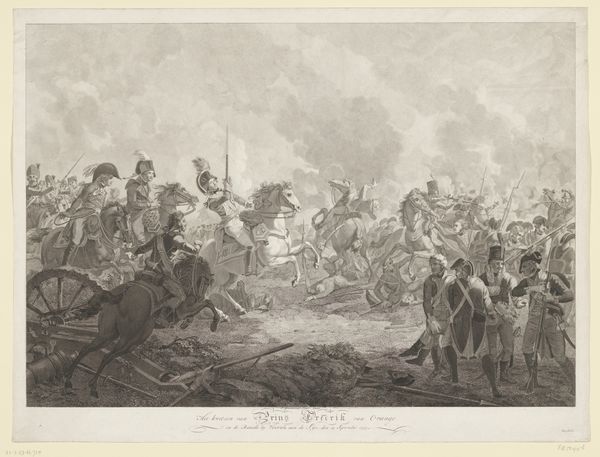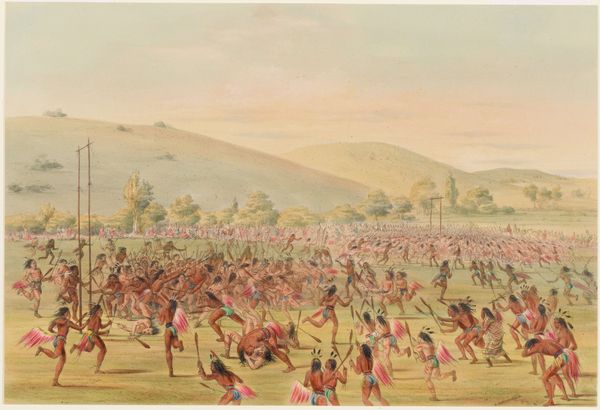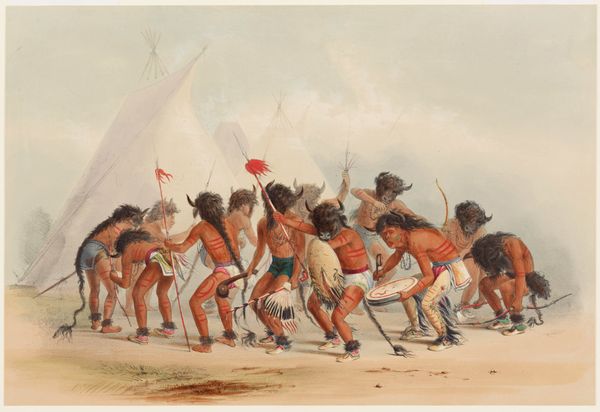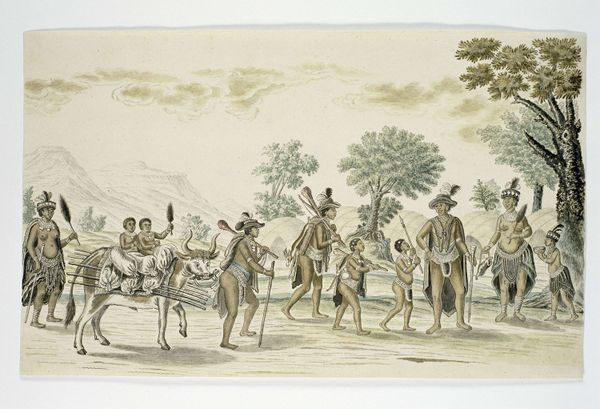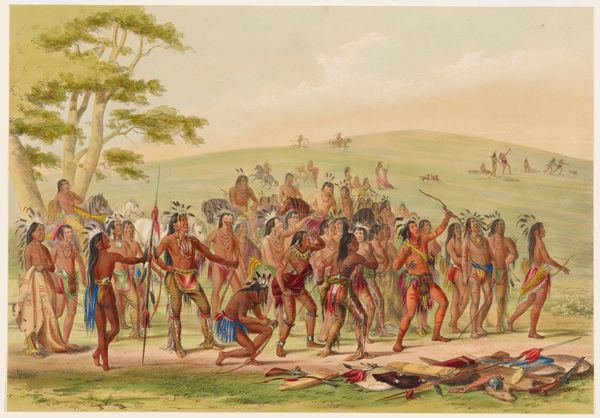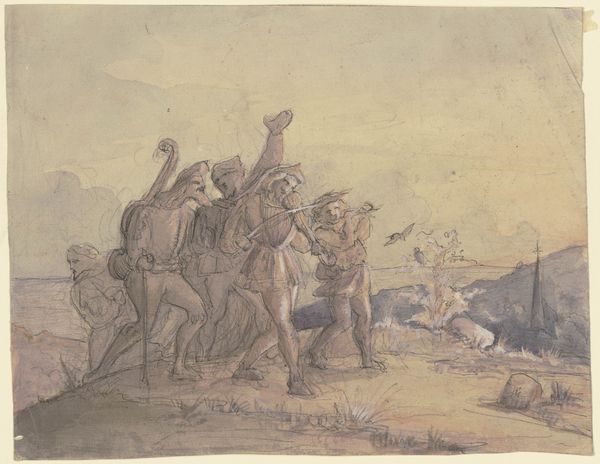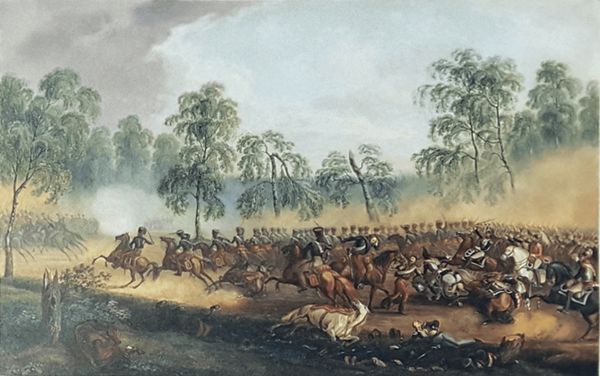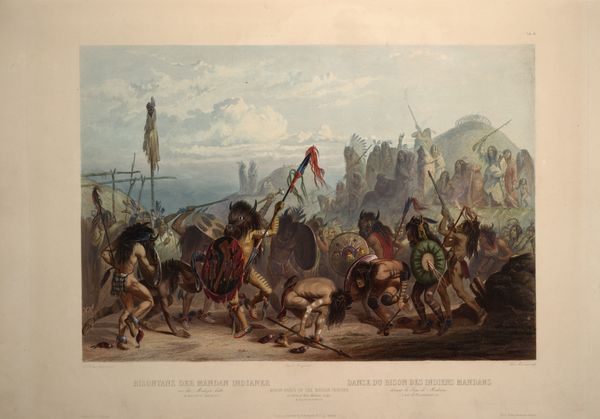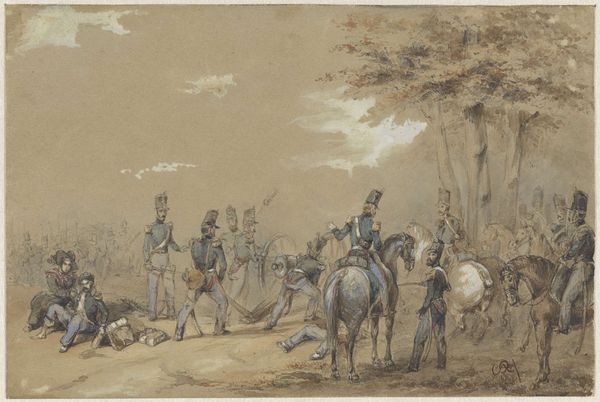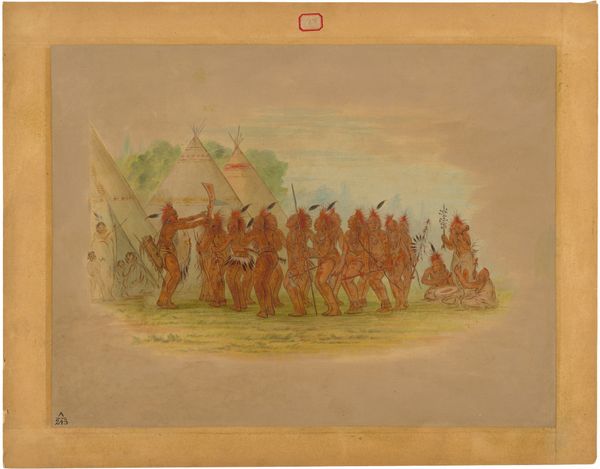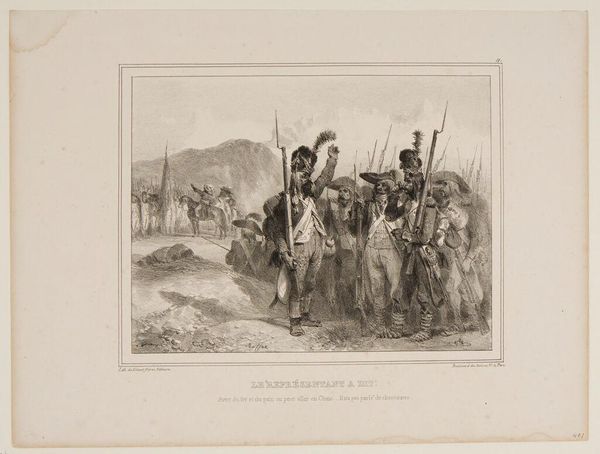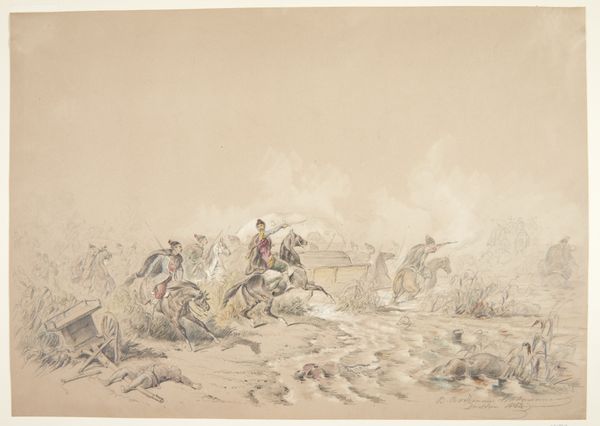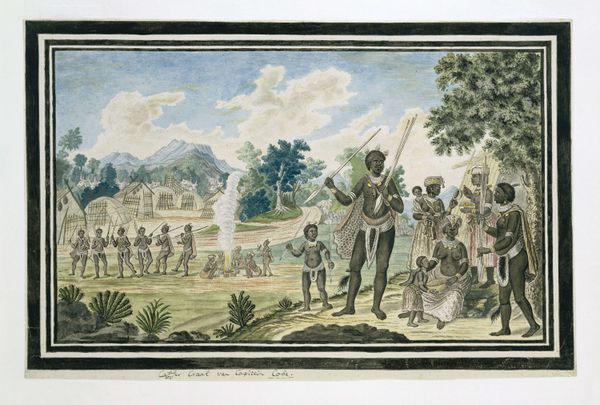
watercolor
#
narrative-art
#
landscape
#
figuration
#
watercolor
#
indigenous-americas
Dimensions: 6 1/4 × 8 15/16 in. (15.9 × 22.7 cm) (image)9 9/16 × 12 3/4 in. (24.3 × 32.4 cm) (sheet)17 9/16 × 21 1/2 × 1 1/8 in. (44.6 × 54.6 × 2.9 cm) (outer frame)
Copyright: Public Domain
Seth Eastman, an artist and West Point graduate, made this watercolor and graphite drawing titled "Beggar's Dance." Eastman's military career afforded him opportunities to depict Native American life, but his position within the U.S. Army, an institution instrumental in the displacement and oppression of Native peoples, complicates the interpretation of his work. The image shows a group of Dakota people engaged in a ceremonial dance. The inclusion of tipis, traditional dwellings, and the landscape, place the scene in a specific cultural and geographical context. But the title, "Beggar's Dance," reflects a colonialist perspective that might diminish the cultural significance and spiritual depth of the ceremony, framing it instead as a form of supplication. Eastman's position as an outsider likely influenced his interpretation and representation of this cultural practice. To fully understand this artwork, we need to consider the history of U.S.-Dakota relations, military records, and indigenous voices. By engaging with these resources, we can gain a deeper understanding of the complex social and political context in which it was made.
Comments
minneapolisinstituteofart almost 2 years ago
⋮
This event is a serious fundraiser. Pulsing with purpose, the group performs and cajoles to get the audience to contribute goods to those in need—hence the name "Beggar’s Dance." In some communities, giving away one’s belongings demonstrated great depth of spirit and generosity. Could the pile at right be donations' Helping to rally excitement are the feather-lined standard and the feather bustles tied around the dancers’ waists. This traditional regalia invoked the power of birds and added a kinetic element to the dance. This watercolor, one of 35 works on paper by Seth Eastman in Mia’s collection, was the basis for an illustration in Henry Rowe Schoolcraft’s massive "Historical and Statistical Information Respecting the History, Condition, and Prospects of the Indian Tribes of the United States" (Philadelphia: Lippincott, Grambo & Co., 1851-57).
Join the conversation
Join millions of artists and users on Artera today and experience the ultimate creative platform.
